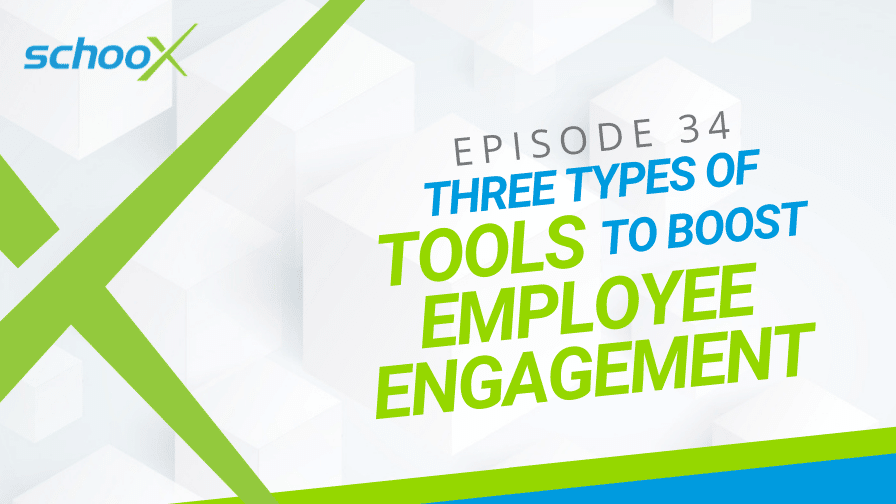14 June 2021
4 Min Read

All organizations want to boost employee engagement and encourage quality learning. Luckily in the age of new technology and remote tools, this is easier than ever.
There’s a tool for everything these days, and with remote work becoming the “new normal,” just about everyone is familiar with them.
Now that people are more comfortable using these tools, the next step is to find ways to improve what these tools can help us achieve.
In this episode of The Learning Xchange, Matthew Brown from Schoox (VP of Learning and Brand Success) talks about using these tools for learning and employee engagement. He shares three types of tools all organizations should explore and gives his recommendations for each one.
Listen to the podcast below or keep reading to learn more.
Here are Matthew’s three tool types all organizations should use:
1. Video-based communication tools
When people think of video, they typically imagine heavily produced, scripted, and polished videos. You might think back to your own onboarding videos or marketing videos. Or perhaps there’s video content in your training program.
Video-based communication can really get a message across in a consistent, clear, and authentic way. That’s why we often include it as part of our e-learning programs. Video in training is, after all, a tried-and-true tactic.
But what if you could use video on a more regular, day-to-day basis as well?
Tools like Loom, the video messaging program, allow you to record and share video messages quickly and easily. This is great if you’re working remotely and need to explain something to your team. Rather than typing it all out, you can record your screen, show what you mean, and share it with the other person.
You can also share these videos company-wide and embedded into emails or web pages.
The great thing about Loom is that you don’t need to have a polished and scripted video. You can create a quick video that’s authentic and personal and gets the message across just as effectively.
Embedding these videos in emails is great for internal communication, but they can also form part of your marketing strategy. You could include a video in an email to market any upcoming events or webinars to help build excitement.
2. Employee advocacy software
Would you like your employees to become advocates and share interesting posts on their own social media?
With an employee advocacy tool, this can be incredibly simple.
The Schoox team is currently using a tool called Bambu by Sprout Social. Bambu allows your employees to amplify your brand’s reach by making it easy to share content across their social media channels.
Organizations can use tools like Bambu to curate a pool of content such as blogs, publications, and infographics that fit with the company message and help employees share it.
It’s also a great way to encourage employees to tell you what types of content interest them. Just remember, with employee advocacy, make sure it’s not mandated. This works better when employees can opt-in and don’t feel pressured to share content.
3. Collaboration tools
Perhaps the most familiar tool type is collaboration tools. Many of us use some form of collaboration tool, whether it’s Slack or Microsoft Teams or something else entirely.
While most people have the basics down and feel pretty comfortable with these tools, they often under-utilize them.
Collaboration tools aren’t just about instant messaging. You can also integrate them into your learning program.
Schoox created a Slack channel just for learning and development to use as a touchpoint for all employees. We use this channel to share ideas or to drop a poll or survey to get feedback. It’s also a great place to let the team know about any learning programs or activities.
Again, this works best when you do not mandate it. You don’t want to force participation because that won’t get you the type of engagement that you want. By keeping it friendly and without pressure, you might even find that people share their own ideas and content without being asked.
People don’t usually market the above tools as learning and development tools. They have other primary uses, but they can become an invaluable part of your learning and development system.
Use video-based communication, employee advocacy, and collaboration tools to maintain a friendly, open-minded, and encouraging dialogue.
RELATED RESOURCES



